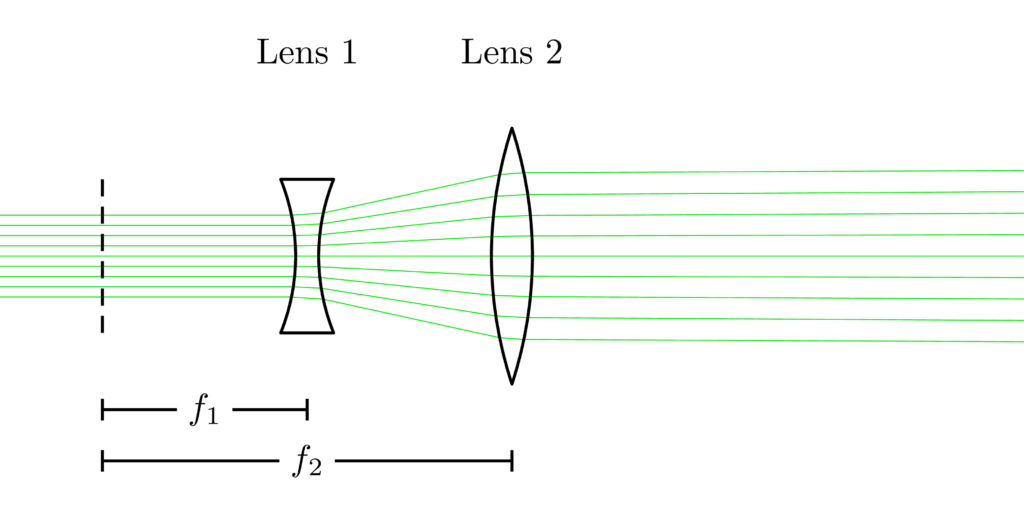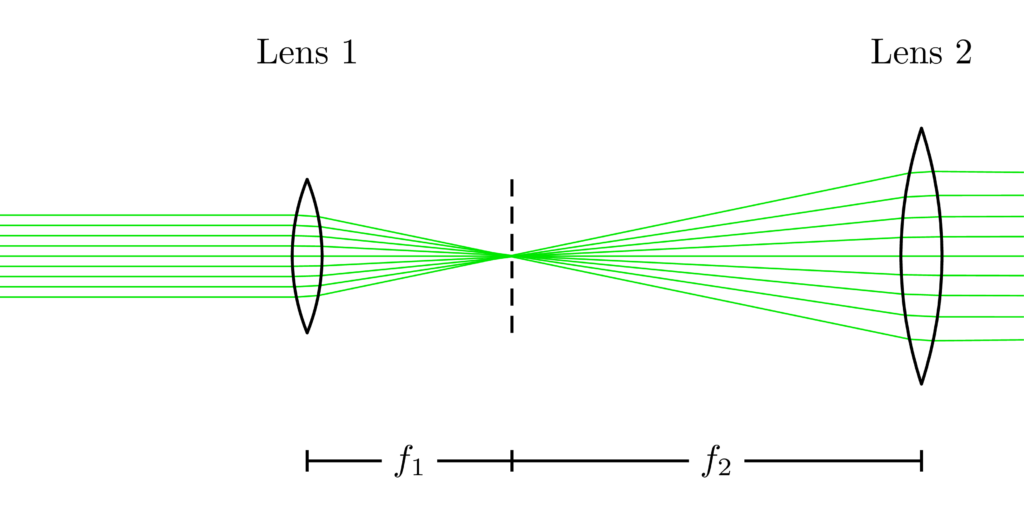Beam expanders and reducers are essential optical components in many applications, including laser technology, microscopy, and imaging systems. These devices are used to increase or decrease the diameter of a laser beam, which is critical for many applications. Let’s discuss the different designs and characteristics of beam expanders and reducers, including the Keplerian and Galilean designs.
Designs
Beam expanders and reducers come in two main designs: Keplerian and Galilean. While the design may not always matter to the application, certain factors can influence the choice.
Keplerian Design
The Keplerian design is made up of two positive lenses, Lens 1 and Lens 2, separated by a distance equal to the sum of their focal lengths (f1 + f2). The output beam is inverted with respect to the input beam, and the beam comes to a focus between the two lenses. This design provides the opportunity to spatially filter the beam using a pinhole filter placed at the beam’s focal point. The Keplerian design is typically not preferred for high-energy beams, such as high-power pulsed laser beams used in some cutting and other manufacturing applications. Focusing pulses with nanosecond duration and optical powers around ~1 MW or higher, for example, can ionize the air and create a spark, which undesirably reduces the power of the pulse and can negatively affect the beam quality.
Galilean Design
 The Galilean design includes a negative (Lens 1) and a positive (Lens 2) lens positioned so that the distance between them equals the difference in their focal lengths (f2 – f1). This approach results in a more compact design than the Keplerian approach. The Galilean design can also be used to minimize the spherical aberration induced by the beam expander or reducer. The negative lens cancels out some of the spherical aberration induced by the positive lens, and the output beam is collimated and not inverted.
The Galilean design includes a negative (Lens 1) and a positive (Lens 2) lens positioned so that the distance between them equals the difference in their focal lengths (f2 – f1). This approach results in a more compact design than the Keplerian approach. The Galilean design can also be used to minimize the spherical aberration induced by the beam expander or reducer. The negative lens cancels out some of the spherical aberration induced by the positive lens, and the output beam is collimated and not inverted.
Expansion Ratio
Beam expanders and reducers are designed to accept and provide collimated beams. Although the beams are collimated, their diameters change as they propagate due to the effects of diffraction. The formula for calculating the beam expansion ratio (m) is the same for both Keplerian and Galilean designs. The beam expansion ratio equals the focal length of the output lens divided by the focal length of the input lens (m = f2/f1). If light enters from the opposite direction, the beam diameter is reduced accordingly.
Conclusion
Beam expanders and reducers are critical optical components to many applications, including laser technology, microscopy, and imaging systems. Understanding the different designs and characteristics of beam expanders and reducers will help you make an informed choice for your specific application.
Image credits: Feature photo – US Air Force, Public domain, via Wikimedia Commons; Optical Drawings – Ulrike Boehm with pst-optexp (PSTricks package), CC BY 4.0
For further information or if you have any questions, please do not hesitate to contact me.




